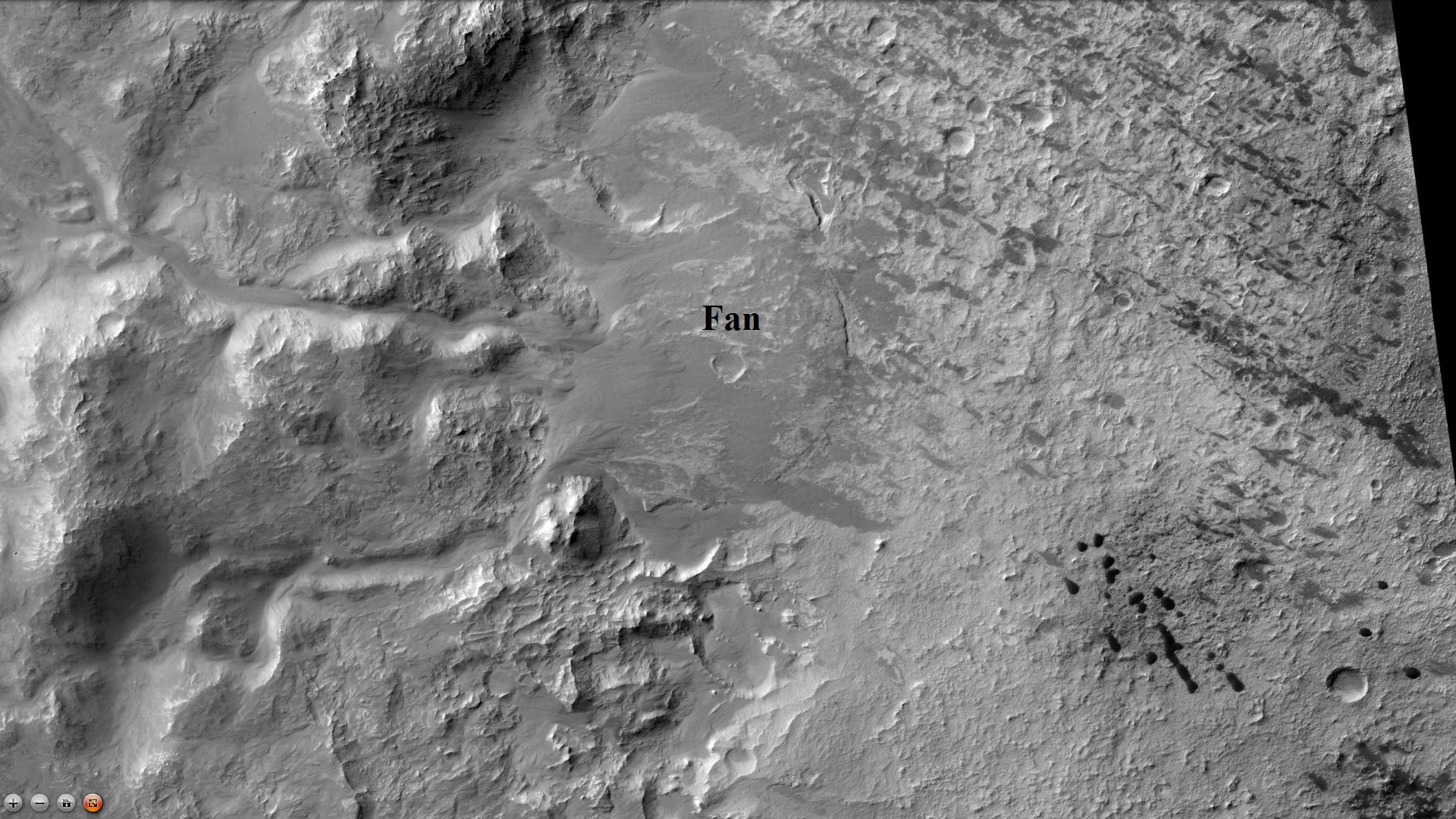Ritchey (Martian crater) on:
[Wikipedia]
[Google]
[Amazon]
Ritchey is a crater on
marsoweb.nas.nasa.gov Retrieved May 11, 2023

Mars
Mars is the fourth planet from the Sun and the second-smallest planet in the Solar System, only being larger than Mercury. In the English language, Mars is named for the Roman god of war. Mars is a terrestrial planet with a thin at ...
, located in the Coprates quadrangle at 28.8° South and 51° West. It measures 79 kilometers in diameter and was named after George W. Ritchey, an American astronomer (1864–1945). Ritchey lies south of Valles Marineris
Valles Marineris (; Latin for '' Mariner Valleys'', named after the ''Mariner 9'' Mars orbiter of 1971–72 which discovered it) is a system of canyons that runs along the Martian surface east of the Tharsis region. At more than long, wide and ...
and north of Argyre Planitia
Argyre Planitia is a plain located within the impact basin Argyre in the southern highlands of Mars. Its name comes from a map produced by Giovanni Schiaparelli in 1877; it refers to Argyre, a mythical island of silver in Greek mythology.
Ar ...
, a large impact crater. There is strong evidence that it was once a lake.Sun, V., R. Milliken. 2014. The geology and mineralogy of Ritchey crater, Mars: Evidence for post-Noachian clay formation. Journal of Geophysical Research:119(4), 810–836Alluvial/Fluvial & Lacustrine Deposits in Ritchey Cratermarsoweb.nas.nasa.gov Retrieved May 11, 2023

Description
It formed later than the Noachian period. Pictures fromHiRISE
High Resolution Imaging Science Experiment is a camera on board the '' Mars Reconnaissance Orbiter'' which has been orbiting and studying Mars since 2006. The 65 kg (143 lb), US$40 million instrument was built under the direction ...
show that the central peak has massive bedrock and megabreccia with large clasts.Ding, N., V. Brayb, A. McEwen, S. Mattson, C. Okubo, M. Chojnacki, L. Tornabene, 2015. The central uplift of Ritchey crater, Mars. Icarus: 252, 255-270.
Ritchey Crater is interesting to scientists because it displays several different layers. A dark layer at the top forms a cap rock that protects the underlying layers from erosion. Under this hard, dark layer is a softer, light-toned rock, that breaks into small boulders. The layers might be formed of volcanic ash, lake or stream deposits, or sand dunes. Fluvial channels and fan deposit are common on and along the walls.Sun, V., and R. Milliken. 2014. The geology and mineralogy of Ritchey crater, Mars: Evidence for post-Noachian clay formation, J. Geophys. Res.:119, 810-836, doi: 10.1002/2013JE004602.
Clay minerals have been found in Ritchy.
These minerals indicate that water was present for a time. Evidence of smectite clay was found around the central uplift of the crater in a geologic unit that was probably formed as a consequence of the impact. The heat of the impact allowed liquid water to be present long enough to turn minerals into clay. Researchers at Brown University discovered impact melt deposits containing clay minerals in Ritchey Crater. Impact melt forms when rock melted during an impact cools and hardens. Clay minerals found within these deposits probably formed after the impact event.
Because Ritchey is Hesperian
The Hesperian is a geologic system and time period on the planet Mars characterized by widespread volcanic activity and catastrophic flooding that carved immense outflow channels across the surface. The Hesperian is an intermediate and transitio ...
or younger in age this means that liquid water could have existed at various times in Martian history. Clay minerals were also found in the crater wall, crater floor, and fan deposits but it is not clear when they might have been produced. These minerals could have formed in place, transported from another location, or have been come from erosion of preexisting clays. However, there is spectral evidence that at least some of the clays in the crater floor and fan deposits came from the crater wall.
Hydrated silica, maybe in the form of hydrated opaline silica has been detected at the central uplift.Milliken, R., et al. 2008. Opaline silica in young deposits on Mars, Geology, 36(11), 847–850, doi:10.1130/G24967A.1. Also, Olivine, Low calcium pyroxene and plagioclase have recently been detected there, as well.
Ritchey Crater has been suggested as a landing site for a Mars Rover. It may have once held a large lake. A thick sequence of sedimentary deposits that include clay is found in the crater. The presence of fluvial features along crater wall and rim, as well as alluvial/fluvial deposits are strong evidence of abundant water being once present.
See also
* List of craters on MarsReferences
{{Portal bar, Solar System Impact craters on Mars Coprates quadrangle